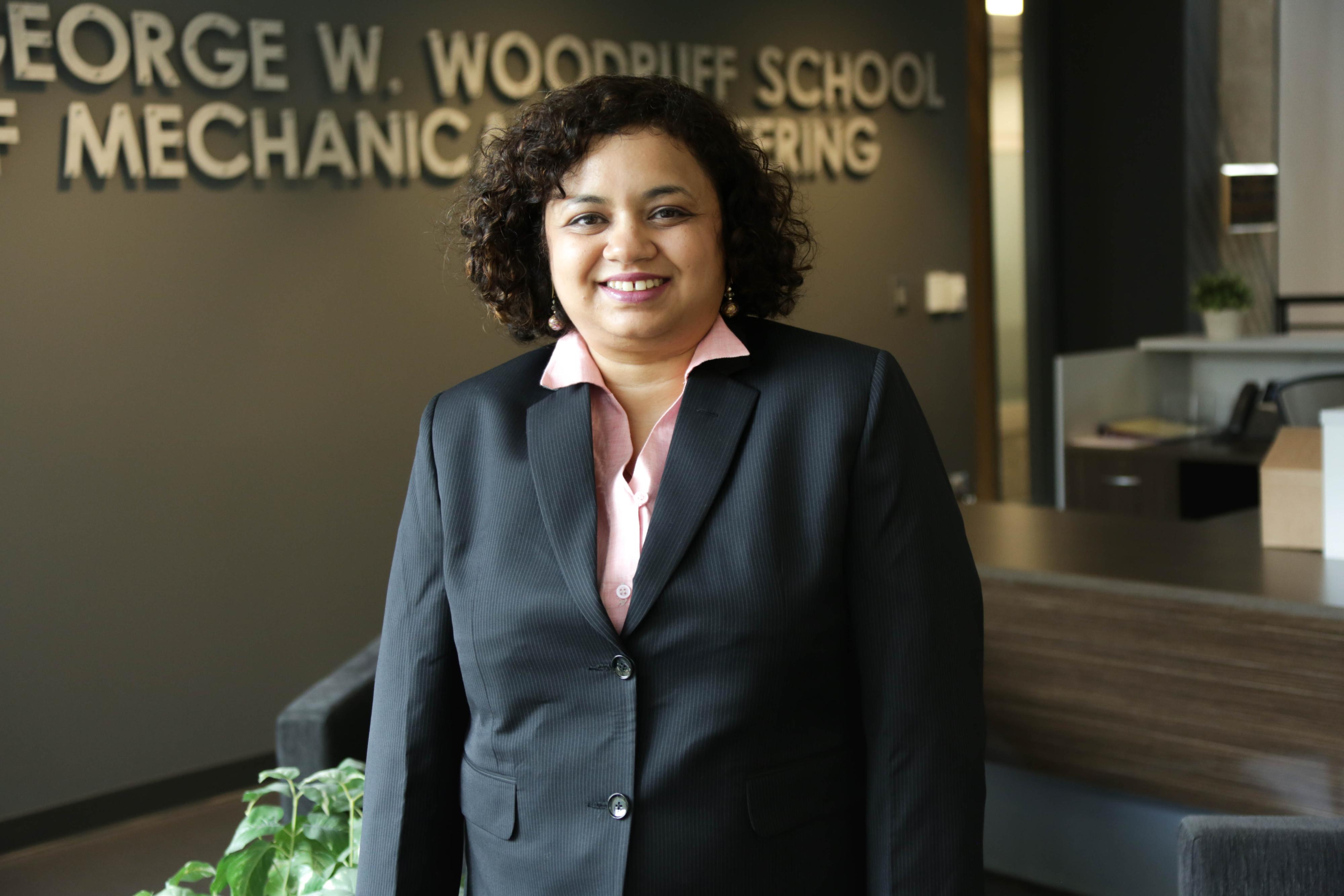
Faculty Spotlight: Assistant Professor Greeshma Agasthya
Get to know one of the Woodruff School's newest faculty members.
August 15, 2024
By Mikey Fuller
Greeshma Agasthya joined the George W. Woodruff School of Mechanical Engineering as an assistant professor in the Nuclear and Radiological Engineering and Medical Physics (NREMP) program in July. Learn about the focus of her research, why she chose a career in academia, who has had an influence on her, and more in this Q&A.
Welcome to the Woodruff School! How did you make the decision to come to Georgia Tech?
In my previous role as a research scientist at Oak Ridge National Lab, I had the opportunity to collaborate with faculty at Georgia Tech and mentor students. That experience gave me a first-hand look at the research interests within the nuclear and radiological engineering and medical physics program and the high quality of students that come through Georgia Tech. These were the main driving forces behind my decision to apply to Georgia Tech’s NREMP program. Additionally, having lived in Atlanta from 2013 to 2015, I knew I really liked the city and it would be a great place for my family. The familiarity and positive experience with collaborations made the decision to move to Atlanta and join Georgia Tech an easy one.
What courses will you be teaching?
This fall I am teaching nuclear sources and their applications, and in the spring, I will be teaching medical imaging physics.
What do you enjoy about working in academia?
From a teaching and mentoring perspective, I really enjoy interacting with students and guiding them as they prepare for future careers, specifically in medical physics. It's rewarding to see their growth and development. From a research perspective, I enjoy the process of going from the chaos of an open-ended question to executing a detailed plan for a solution. Additionally, the opportunity to meet and collaborate with some of the best minds in the field keeps me engaged and motivated.
What is the focus of your research?
My research focuses on computational medical physics. I am interested in developing multiscale digital twins for personalized radiation dosimetry for imaging, therapy, and theranostics; modeling and simulations to assess novel radiation protocols from cancer diagnosis to cancer treatment; and developing AI frameworks to model patient trajectories for early intervention and treatment in oncology. With these interests, my research aims to develop and apply multiscale computational digital twins to study and compare novel radiation-based cancer diagnosis and treatment protocols.
Who are some of your career influences?
Many people, both within and outside my field, have influenced me over time. My mentors, Dr. Anuj Kapadia and Dr. Ioannis Sechopoulos, have consistently been generous with their time, offering valuable insights and guidance on technical challenges and career advice. I also look up to several scientists whose work I have engaged with and whose careers I closely follow, as there is always something to learn from their experiences. Additionally, I owe much of my career success to the support of my parents, husband, and family.
What achievements are you most proud of in your career?
Over time, I have acquired experience in medical physics research at academic institutes, hospitals/medical centers, and a national lab. In each of these settings, I have had the opportunity to mentor students and postdoctoral scholars and seeing them advance in their careers has been very rewarding. Some of my research achievements include developing a prototype neutron imaging system, testing methods to improve breast tomosynthesis, and serving as the technical lead on a team that developed a multiscale framework to estimate radiation dose and biodistribution for a radiopharmaceutical. These projects have been both intellectually stimulating and impactful.
What breakthroughs would you like to see in your field of research over the next decade?
I would like to see the development of protocols to catch cancer as early as possible and treatments that are personalized to the point where we can start optimizing for the reduction of side effects for patients. The personalization of cancer treatment requires multidimensional optimization, which is where digital twins and AI can help.
What is the biggest challenge of being a new professor on campus?
I am yet to encounter a big challenge; I am just weeks into this job. I do anticipate juggling teaching, research, and grant writing to be an interesting time optimization problem.
What are you most excited about while working at Tech?
I am most excited to collaborate with colleagues from diverse research backgrounds, as it will open up new avenues for research. Additionally, I am enthusiastic about working with the talented student body at the university. Contributing to their academic and professional growth, while being inspired by their curiosity and drive, is something I am looking forward to.
What do you enjoy doing for fun?
I enjoy gardening, reading books, taking long walks, and exploring new places.
